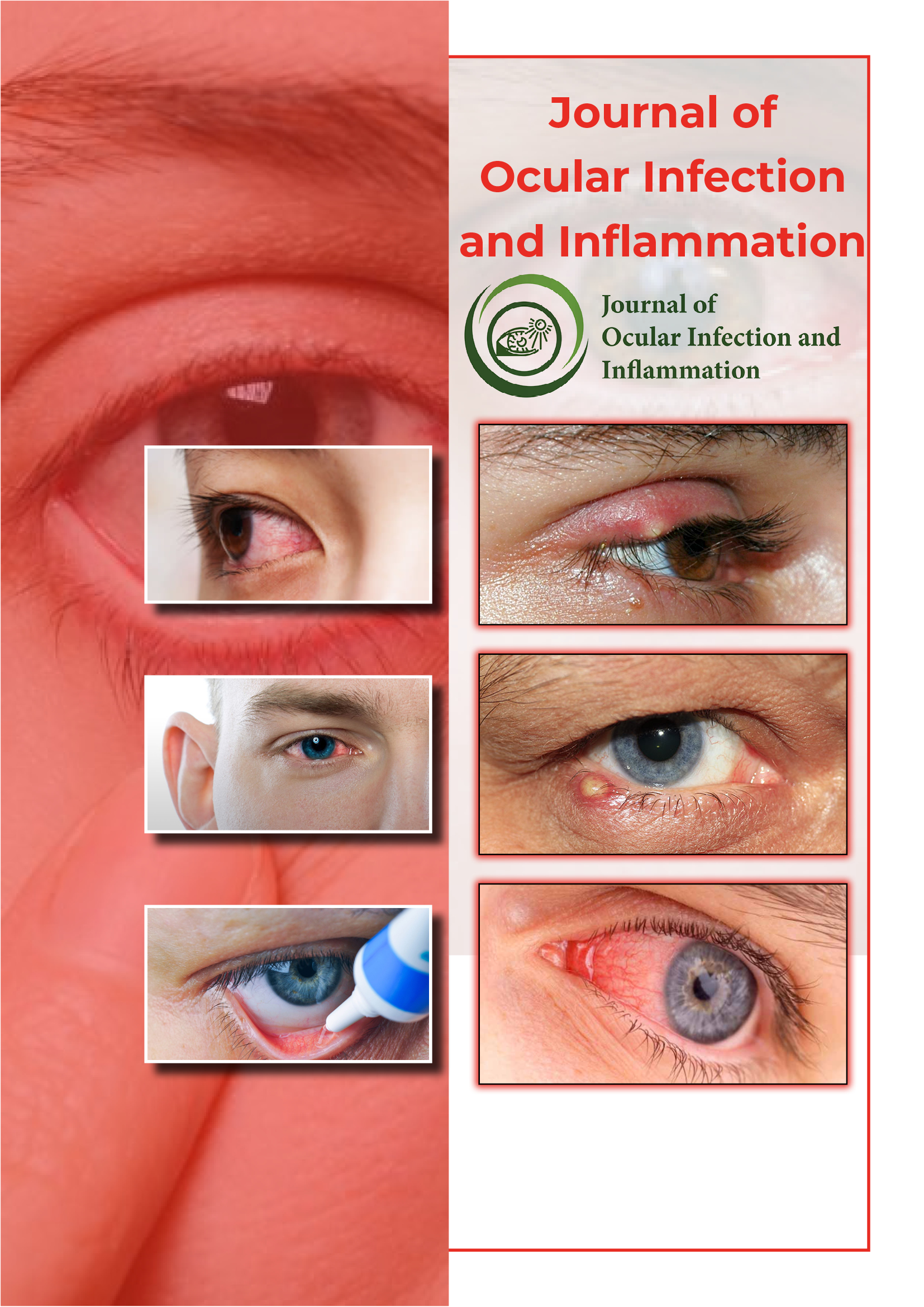Useful Links
Share This Page
Journal Flyer

Open Access Journals
- Agri and Aquaculture
- Biochemistry
- Bioinformatics & Systems Biology
- Business & Management
- Chemistry
- Clinical Sciences
- Engineering
- Food & Nutrition
- General Science
- Genetics & Molecular Biology
- Immunology & Microbiology
- Medical Sciences
- Neuroscience & Psychology
- Nursing & Health Care
- Pharmaceutical Sciences
Commentary - (2023) Volume 4, Issue 1
Overview of Ocular Tuberculosis Causes and their Diagnosis
Rupesh Gupta*Received: 02-Jan-2023, Manuscript No. JOII-23-19798; Editor assigned: 04-Jan-2023, Pre QC No. JOII-23-19798 (PQ); Reviewed: 18-Jan-2023, QC No. JOII-23-19798; Revised: 25-Jan-2023, Manuscript No. JOII-23-19798 (R); Published: 01-Feb-2023, DOI: 10.35248/JOII.23.04.107
Description
Ocular Tuberculosis is a significant public health problem. In most cases, the disease is acute and acute attacks are treated with antibiotics, but these are ineffective in the chronic form. In this form, the eye cannot be saved. It has been estimated that 50% of people with TB in India develop ocular TB. This can be fatal and there is very low awareness about this form of the disease and the correct course of treatment. According to the National TB Report 2011, 25 lakh people develop chronic TB every year and a large number of them have not been diagnosed. According to the American Society for Microbiology, 10% of all cases of TB are ocular, and it is the leading cause of death from TB for children and young adults. Ocular Tuberculosis can spread to the lungs, kidneys and brain. It can result in total blindness, the development of glaucoma and seizures. Pneumonia can develop in people with TB when their immune system is already compromised. Bacterial or viral infections may be to blame. Antibiotic treatment is the first line of treatment for it. If not, then supportive therapy and ventilation is required. One of the most important things to note is that patients suffering from pneumococcal pneumonia may not require anti-TB drugs and can be cured without them. A rare but severe form of the disease that can affect both the elderly and those with certain long term illnesses. When the immune system is weakened, TB bacteria may invade the brain, causing various mental disorders. The symptoms may vary from mild memory loss, confusion and impaired communication skills to seizures and coma. Treatment can help the person recover the mental capacity.
“Some of the lesser known causes of tuberculosis include pneumocystis pneumonia and listeriosis. There is no clear and precise definition of infectious tuberculosis but any infection of the upper respiratory tract, lungs, lymph nodes, brain or anus can be considered as TB. While chronic forms of the disease can be treated with medications, there is no standard treatment for infectious forms of the disease,” he said.
Treatment of ocular tuberculosis
Treatment for ocular tuberculosis generally follows that for pulmonary TB. Rifampicin, isoniazid, pyrazinamide, and ethambutol are the four medications used in the treatment, and they are given daily for two months, followed by four months of rifampicin and isoniazid. Consider TB and multidrug resistance if the patient doesn't improve after three to four weeks, and care should continue in collaboration with an infectious disease expert. In order to mitigate the effects of granulomatous inflammation and to lessen the likelihood of a delayed-type hypersensitivity reaction to TB antigens, steroids are administered. They should only be used sparingly and in conjunction with Antituberculous Therapy (ATT), as there is a risk of reactivating latent disease or extending the period during which bacilli are actively growing in the eye. As a hepatic steroid metabolising enzyme inducer, rifampicin will reduce the therapeutic benefit of corticosteroids. When using rifampicin concurrently, it might be required to raise the corticosteroid dosage to maintain effectiveness. There have been reports of paradoxical deterioration after ATT was started. The immune system becomes more exposed to bacterial antigens following treatment, which causes the release of pro-inflammatory cytokines and is assumed to be the cause of this condition. Corticosteroid co-treatment can avoid this occurrence. Peripheral scatter retinal laser therapy is beneficial for treating TB delayed hypersensitivity retinal vasculitis (Eales disease), in addition to ATT, in order to lessen the ischemic drive for retinal neovascularization.
Citation: Gupta R, Overview of Ocular Tuberculosis Causes and their Diagnosis. J Ocul Infec Inflamm. 04:107.
Copyright: © 2023 Gupta R. This is an open-access article distributed under the terms of the Creative Commons Attribution License, which permits unrestricted use, distribution, and reproduction in any medium, provided the original author and source are credited.

